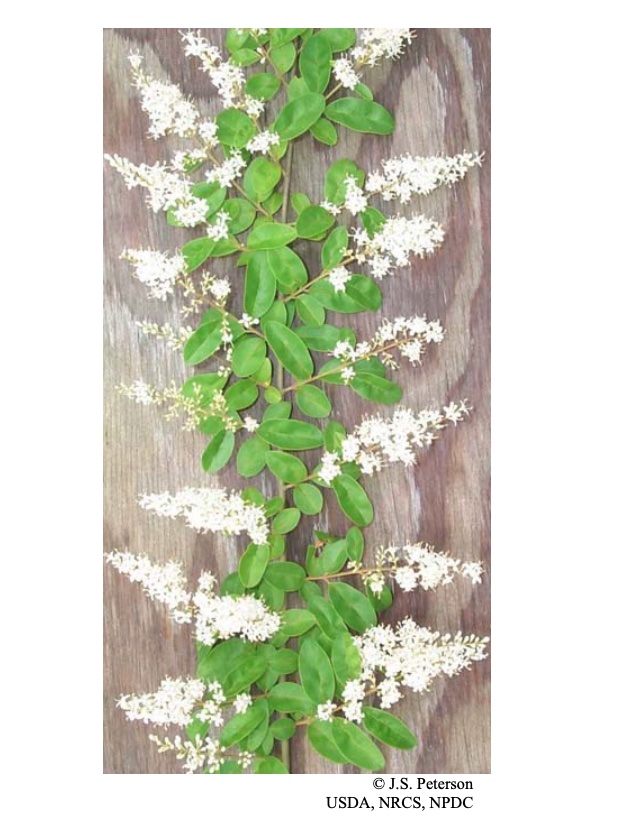BOLO: Chinese Privet Turns Our Winter Forests Green
go.ncsu.edu/readext?975216
en Español / em Português
El inglés es el idioma de control de esta página. En la medida en que haya algún conflicto entre la traducción al inglés y la traducción, el inglés prevalece.
Al hacer clic en el enlace de traducción se activa un servicio de traducción gratuito para convertir la página al español. Al igual que con cualquier traducción por Internet, la conversión no es sensible al contexto y puede que no traduzca el texto en su significado original. NC State Extension no garantiza la exactitud del texto traducido. Por favor, tenga en cuenta que algunas aplicaciones y/o servicios pueden no funcionar como se espera cuando se traducen.
Português
Inglês é o idioma de controle desta página. Na medida que haja algum conflito entre o texto original em Inglês e a tradução, o Inglês prevalece.
Ao clicar no link de tradução, um serviço gratuito de tradução será ativado para converter a página para o Português. Como em qualquer tradução pela internet, a conversão não é sensivel ao contexto e pode não ocorrer a tradução para o significado orginal. O serviço de Extensão da Carolina do Norte (NC State Extension) não garante a exatidão do texto traduzido. Por favor, observe que algumas funções ou serviços podem não funcionar como esperado após a tradução.
English
English is the controlling language of this page. To the extent there is any conflict between the English text and the translation, English controls.
Clicking on the translation link activates a free translation service to convert the page to Spanish. As with any Internet translation, the conversion is not context-sensitive and may not translate the text to its original meaning. NC State Extension does not guarantee the accuracy of the translated text. Please note that some applications and/or services may not function as expected when translated.
Collapse ▲Winter in Lee County is painted in shades of brown, white and green. The agricultural fields are harvested and striped with the last season’s rows, and the bright green of winter wheat pokes through in some places. The deciduous trees, like oaks and hickories, have dropped their leaves and you see a mosaic of bark textures as you drive by our forests. But there is something more sinister that is easier to see this time of year that you probably have never thought twice about: the invasive plant, Chinese privet, Ligustrum sinensis.
What does it look like and why is it here
Chinese privet, Ligustrum sinensis, is a member of the olive family, Oleaceae. If you look closely at the small fruits drooping from the branch tips, you can see the resemblance. It is a semi-evergreen shrub that can become about 15 ft. tall by 15 ft. wide. It flowers in the spring with dainty panicles of white, fragrant flowers. The leaves are about a quarter to half an inch long, light to dark green, and are oppositely arranged (across from each other) on the stem. The plants can tolerate a lot of different growing conditions: full sun to full shade; poor to rich soil; and wet to almost dry soil.
wide. It flowers in the spring with dainty panicles of white, fragrant flowers. The leaves are about a quarter to half an inch long, light to dark green, and are oppositely arranged (across from each other) on the stem. The plants can tolerate a lot of different growing conditions: full sun to full shade; poor to rich soil; and wet to almost dry soil.
It was brought into the United States around the 1870s to line battlefields from the Civil War. These plants most likely came from the United Kingdom, where it is commonly used as a privacy hedge (hence the name ‘privet’). The USDA and botanists started taking notice of the plant escaping into natural areas around 1900, mainly along the Gulf Coast. Unfortunately, the population numbers exploded exponentially over the next century and it is a huge ecological problem in our modern ecology in the US.
Why is it bad
The wintertime in North Carolina is the easiest time to see whether you have Chinese privet on your property. It is one of the few plants that is green in the wintertime in our climate, and can stand out in our forested areas and land edges as walls of green. Pine trees, mountain lauren, Rhododendrons and holly trees are not going to form dense thickets like privets will.
There are a few issues with this growing habit. The big one is shading the ground in the winter. We are fortunate in the Southeastern United States to have a beautiful diversity of understory wildflowers that come out in the winter and spring because they take advantage of the winter sun making it through the tree canopies in the wintertime. This critical sunlight does not reach the forest floor for our wildflowers where privet grows.
The other issue with Chinese privet thickets is they outcompete our native trees and shrubs by crowding them out and not letting them grow. There has been some evidence they can be allelopathic, meaning they create chemicals in the soil that can suppress the growth of other plants. They also have aggressive root systems that are much more effective at gathering nutrients and water, which takes these vital resources away from the surrounding plants.
Finally, Chinese privet is an issue because it makes a lot of fruit each year and this fruit is quickly consumed and spread by birds to the surrounding area. This means one plant could quickly become a forest full if not properly controlled.
How can you get rid of it
Thankfully, gardeners and land managers have tools in their toolboxes to get rid of Chinese privet. The first step is making sure you have properly identified the species and you can do that easily by bringing a sample in or emailing a photo into your local N.C. Cooperative Extension Office.
Once you have properly identified you have a Chinese privet, there are a few options. If the plant is small or young, you can simply pull the plant up with your hands or with a tree wrench. You can use herbicide to kill larger trees by cutting the branches down, leaving stumps about 1-2 feet tall, and brushing or spraying herbicide rated for killing trees and shrubs directly on the cuts. Make sure to read the label BEFORE applying the chemical. Some options include Triclopyr and Glyphosate. By targeting your herbicide application to just the cut stumps reduces how much chemical you use and reduces the likelihood of you spraying non-target plants.
Make sure to not compost or make a brush pile of privet debris, as it can root back into the soil and keep growing! Burn or take to the landfill!
With everyone keeping an eye out for Chinese privet, we can start to remediate our beautiful forests and make room for more wildflowers!
References
– EDDMaps Profile for Ligustrum sinensis, Chinese privet
– The Invasion of Southern Forests by Nonnative Plants: Current and Future Occupation, with Impacts, Management Strategies, and Mitigation Approaches– James H. Miller, Dawn Lemke, and John Coulston
– USDA Plant Guide for Ligustrum sinensis
– Weed Risk Assessment for Ligustrum sinense Lour. (Oleaceae) – Chinese privet-
– Iannone, B. V., Carnevale, S., Main, M. B., Hill, J. E., McConnell, J. B., Johnson, S. A., Enloe, S. F., Andreu, M., Bell, E. C., Cuda, J. P., & Baker, S. M. (2020). Invasive Species Terminology: Standardizing for Stakeholder Education. The Journal of Extension, 58(3), Article 27.
– Crystal-Ornelas R., E.J. Hudgins, R.N. Cuthbert, et al. 2021. Economic costs of biological invasions within North America. NeoBiota 67:485-510.
– Zenni R.D., F. Essl, E. García-Berthou, et al. 2021. The economic costs of biological invasions around the world. NeoBiota 67:1-9.
– Executive Order 13112 – Invasive Species
– North Carolina Invasive Species Council
– UF/IFAS Center for Aquatic and Invasive Plants (CAIP)




